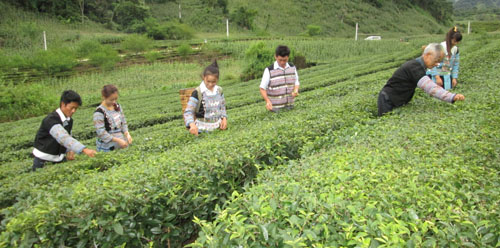
(HBO) - On the basis of product registration forms participating in the 2019 OCOP Program of cooperatives, production facilities and households, Hoa Binh City People's Committee considers 9 products to participate in the 2019 OCOP Program.
Specifically: Da River fish
products of Cuong Thinh Company in Su Ngoi commune; 4 products from sachi tree,
including dried and oil sachi seeds of omega 3 of Vietnam Inca Sachi joint
Stock Company in Huu Nghi Ward; the Hoa Binh Agricultural Service Cooperative
has two products: red lingzhi mushroom and products made from sachi tree seeds;
Shan Tuyet tea products of Phuong Huyen Company in Tan Thinh ward; Red Lingzhi
products of Hoa Binh Center for Scientific and Technological Information
Application in Trung Minh commune.
According to data from the Hoa Binh Provincial Party Committee, the industrial production index for the first six months of 2025 is estimated to have increased by 20% compared to the same period last year. This marks the highest year-on-year growth rate for this period since 2020.
In the first six months of 2025, Hoa Binh province’s export turnover was estimated at 1.145 billion USD, marking an 18.11% increase compared to the same period in 2024. Import turnover was estimated at $ 804 million, a 17.15% increase, which helped the province maintain a positive trade balance.
The lives of the ethnic minority farmers in Tan Lac district have gradually improved thanks to the new directions in agricultural production. This is a testament to the collective strength fostered through the professional associations and groups implemented by various levels of the district’s Farmers’ Union.
With the motto the "product quality comes first,” after nearly one year of establishment and operation, Muong village’s Clean Food Agricultural and Commercial Cooperative, located in Cau Hamlet, Hung Son Commune (Kim Boi district), has launched reputable, high-quality agricultural products to the market that are well-received by consumers. The products such as Muong village’s pork sausage, salt-cured chicken, and salt-cured pork hocks have gradually carved out a place in the market and they are on the path to obtaining the OCOP certification.
In the past, the phrase "bumper harvest, rock-bottom prices" was a familiar refrain for Vietnamese farmers engaged in fragmented, small-scale agriculture. But today, a new spirit is emerging across rural areas of Hoa Binh province - one of collaboration, organisation, and collective economic models that provide a stable foundation for production.
Maintaining growing area codes and packing facility codes in accordance with regulations is a mandatory requirement for agricultural products to be eligible for export. Recently, the Department of Agriculture and Environment of Hoa Binh province has intensified technical supervision of designated farming areas and packing facilities to safeguard the "green passport" that enables its products to access international markets.


